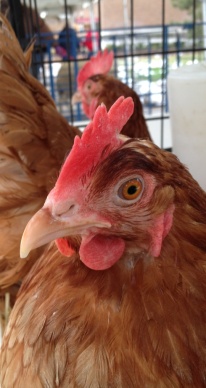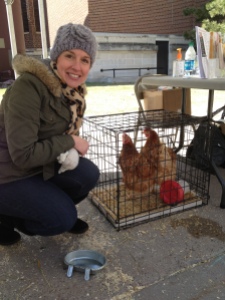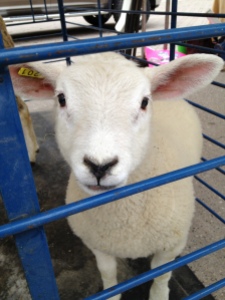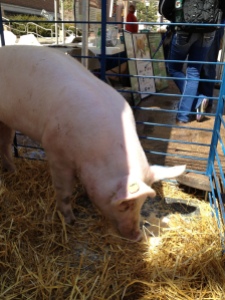I’m back to writing about chickens tonight … laying hens, to be specific.
Last week the organizations I work for (Minnesota Turkey Growers Association and the Chicken and Egg Association of Minnesota) participated in a special “Agriculture Awareness Day” at the University of Minnesota. The event – organized by a group of dedicated students in the Ag Education Club – sought to increase awareness of Minnesota’s diverse agriculture industry. (You can read more about the event here.)
I was at the event, along with another coworker of mine. We manned our booth, which included information about Minnesota’s turkey, chicken and egg farmers – plus, we had two live laying hens with us for the entire day. (True story – one of the hens escaped from its pen. Twice. And yes, this means I was chasing a very stealth chicken who was, apparently, hell bent on exploring the Minneapolis campus of the University of Minnesota on her own. You can be sure I didn’t let that happen a third time!)

We talked to a variety of folks of all different ages throughout the six hours of the event – and everyone was very friendly. No animal activist protests – and even the vegetarians were apologetic when we offered them samples of turkey sandwiches. (“That looks sooo good, but I’m sorry, I’m a vegetarian.”)
We received a lot of questions about raising backyard chicken flocks, which caught me a little off-guard at first. I am used to talking about the chicken farmers I know who raise thousands of birds on their farms and backyard chicken flocks aren’t necessarily on my everyday radar. It makes sense, though, as the people we talked to are urban residents, for the most part. Plus, it’s always good to be reminded we shouldn’t take anything for granted in food production. My coworker and I went with the flow and tried to answer questions as best we could – or direct them to useful sources of information as needed.
One question, in particular, reminded me that there is a segment of the population that truly has very little knowledge of farm animals and how animal production works. Essentially we heard this question from more than one person: “How does a chicken lay an egg without a rooster?”
The answer? Well, without going into a lengthy discussion about chicken reproduction, let me just tell you that laying hen chickens don’t need a male rooster to lay an egg. These hens lay, essentially, an egg every 30 hours or so that is unfertilized – hence, there is no baby chicken growing inside. These are the eggs we purchase to use for eating and baking.
Now, as my Teacher Man would say with a smirk, “when a male chicken meets a female chicken …” then typically that egg is fertilized and will eventually hatch in about 21 days (give or take) as long as the hen incubates the egg (or keeps it warm).
So there you have it – a (very) basic physiology lesson on laying hens.
In closing, I will say it was great to see that the people I met at Agriculture Awareness Day had a natural curiosity about farming and agriculture, and most seemed very willing to ask questions and learn more. And with a variety of agricultural organizations and animals in attendance, there was plenty of opportunity for everyone to learn from each other.
I hope you enjoy a few of my pictures from this event!






Awesome pictorial 🙂 The basics are always the best subjects! So awesome that the U of M does this event!
Thanks, Lynn! 🙂
Thanks for braving the cold to take part in this great day! Love your photos too. Can’t believe your chicken escaped… Twice. 🙂
I was surprised about the escaping chicken too – quite funny! 🙂